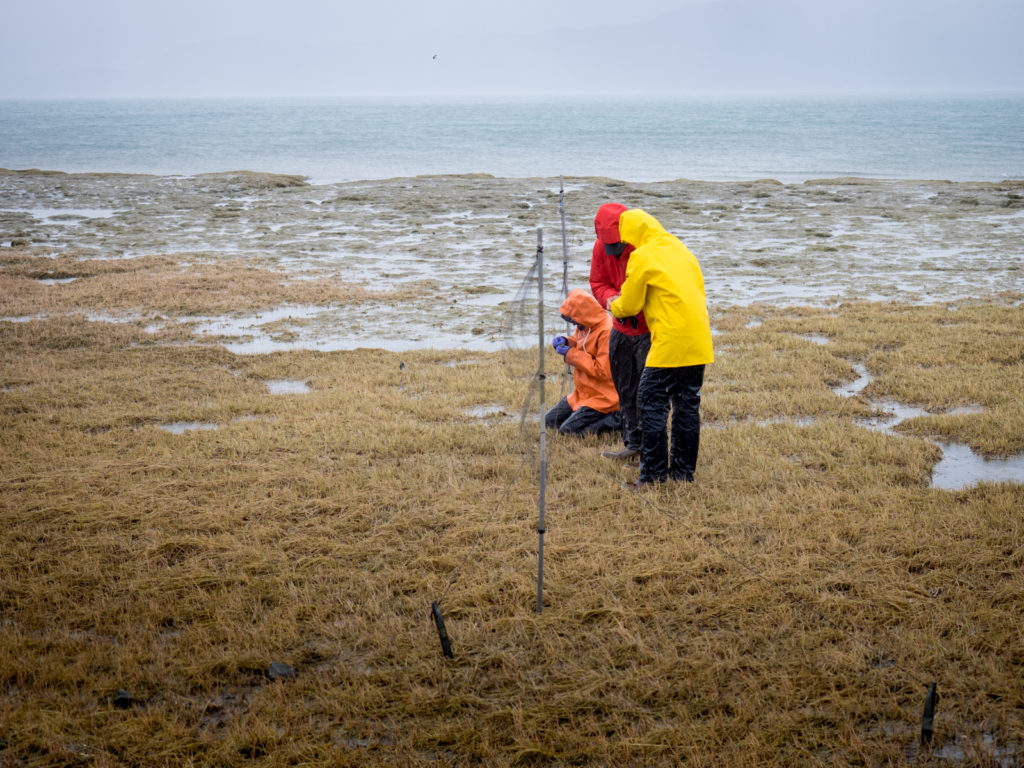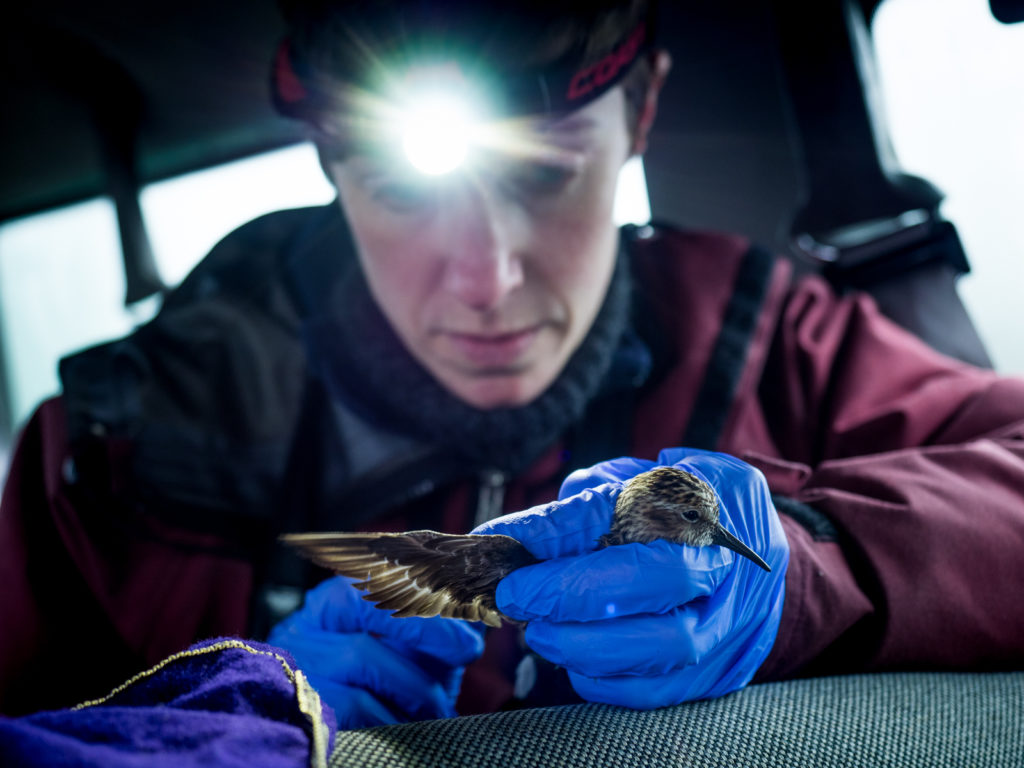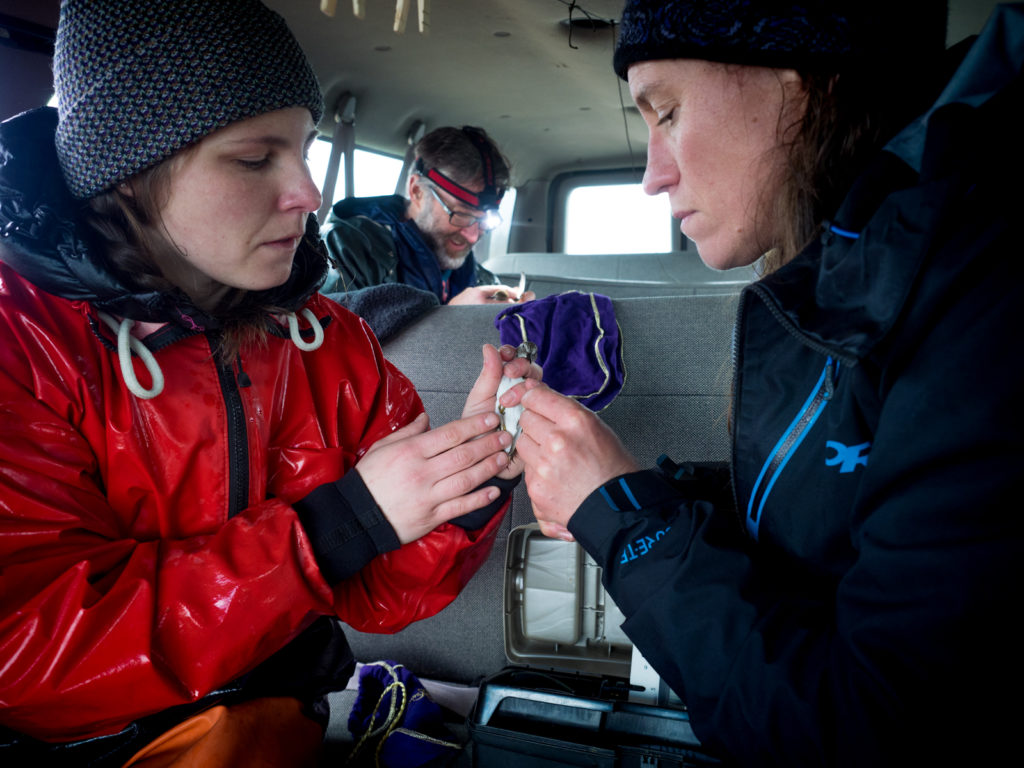Shorebird Sampling for Avian Influenza

Photo Highlights by Teal Barmore
For the third year in a row, researchers from the Prince William Sound Science Center and Tufts University captured, sampled, and banded shorebirds at Hartney Bay for a study that investigates the exposure of Alaskan shorebirds to avian influenza (“bird flu”) and whether fitness costs are magnified during migration.
Each shorebird is weighed, measured, and banded before swabs and blood samples are taken to test for avian influenza.
Dr. Nichola Hill, a researcher from Tufts University takes blood samples from a shorebird. Principal investigators on the project include Dr. Hill as well as Dr. Jonathan Runstadler (also from Tufts) and Dr. Mary Anne Bishop of the Prince William Sound Science Center.
The Copper River Delta is a migratory bottleneck for shorebirds that breed in western Alaska and migrate as far south as Peru. Studying birds from this migratory stopover point allows researchers to analyze a cross-section of birds migrating from a large geographic area.
After gently picking the shorebirds from the net the birds are kept in soft Crown Royal bags until it is their time to be analyzed. The thick dark fabric of the bags helps keep the birds warm and calm after capture.
Dr. Johnathan Runstadler, a researcher from Tufts University takes a blood sample from a shorebird. The blood samples are tested for avian influenza.
Research Assistants, Anne Schaefer and Kirsti Jurica, work together to band a Least Sandpiper.
After sampling, the shorebirds are set free. Learn more about this project on our website at https://pwssc.org/shorebird-aiv/.












